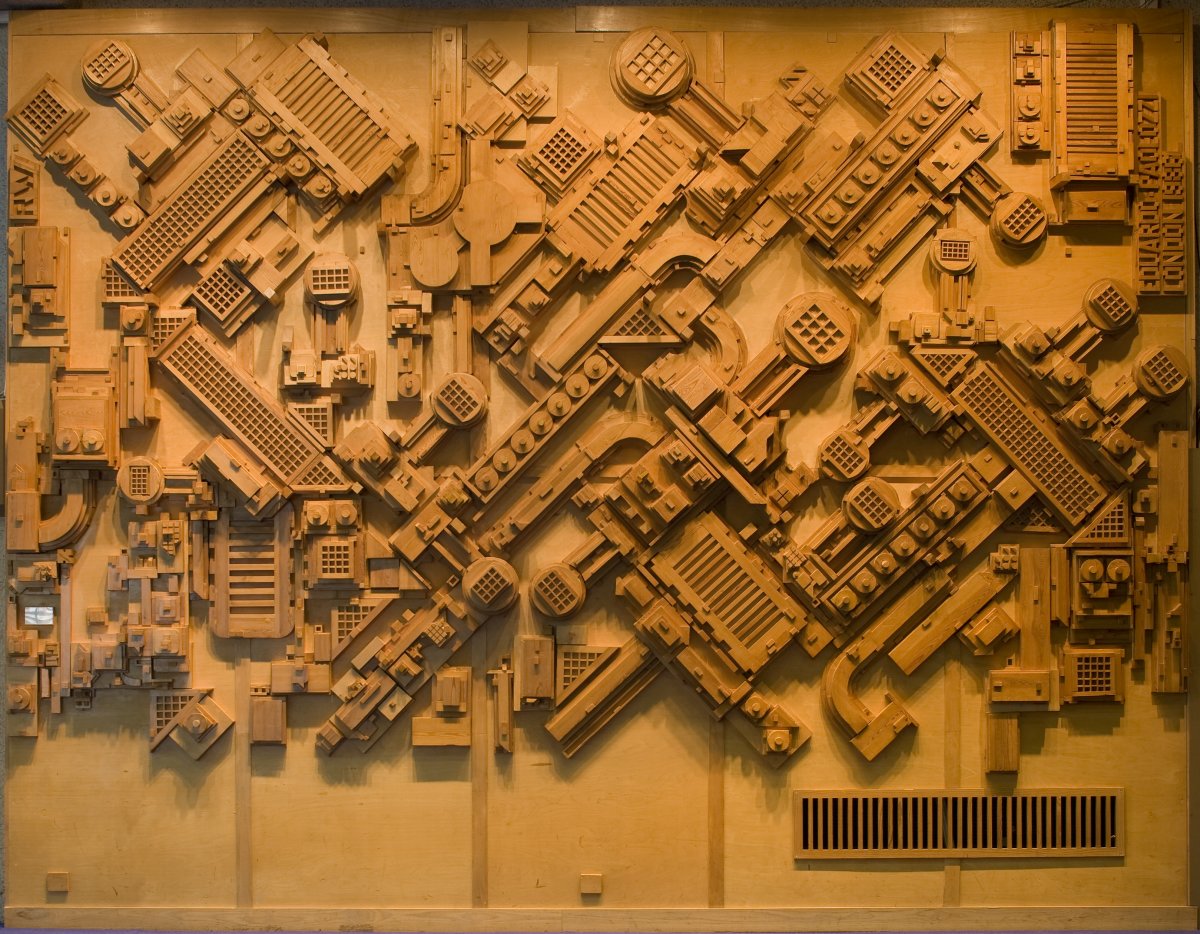On This Island (after Benjamin Britten Op.11)
Sir Eduardo Paolozzi (1924 - 2005)
Wood relief
1985-1986
-
About the work
- Location
-
Country: UK
City: London
Place: Queen Elizabeth II Conference Centre
A 1935 poem, On This Island, by W. H. Auden (1907-1973), inspired a song cycle of the same title by English composer Benjamin Britten (1913-1976). As a student at the Slade School of Art, Eduardo Paolozzi owned records of Britten's music and a volume of Auden's poetry. Years later, poet and composer were reunited in Paolozzi's relief sculpture On This Island commissioned in 1985-1986 for the Queen Elizabeth II Conference Centre in central London. Originating from an alphabet of shapes, the construction of Paolozzi's sculpture suggests different visual images, from industrial machinery to musical notation. From the 1970s on, Paolozzi was fascinated by the depiction of abstract musical concepts. He likened On This Island's repetition of forms and spaces to musical sounds and pauses. Marrying together seeing and listening, he distilled both acts into an inseparable experience.
Born in Leith, Scotland, to Italian parents, Paolozzi helped in the family's ice cream parlour as a child. An avid interest in collecting magazine cuttings of popular cultural icons in scrapbooks sparked his early artistic development. After studying at Edinburgh College of Art and the Slade in the 1940s, he lived in Paris, meeting the city's avant-garde. By the 1960s he had exhibited internationally and became widely regarded as the innovator of British Pop Art. In the last decades of his career, Paolozzi enjoyed international acclaim for an imaginative range of public and private commissions. Highlights included wall mosaics for Tottenham Court Road Underground Station (1980-1985) and the sculpture of Sir Isaac Newton for the British Library (1994-1997).
-
About the artist
Eduardo Paolozzi was born in Leith, Edinburgh, to Italian parents. During the Second World War he was interned in a camp as a foreign ‘alien’, before serving in the Royal Air Force until 1943. After the War, he studied at Edinburgh College of Art and at the Slade School, London. In 1947, he lived in Paris where he met the sculptor, Alberto Giacometti. Greatly influenced by Dada and Surrealism, he began producing distinctive collages. Returning to London in 1949, Paolozzi taught textile design at the Central School of Art and Design. In the 1950s and 1960s, he was a leading exponent of British Pop Art. Paolozzi represented Britain at the Venice Biennale in 1960. Retrospectives of his work took place at the Tate Gallery (1971), and the National-Galerie Berlin (1975).He was elected a Royal Academician in 1979, appointed Her Majesty's Sculptor in Ordinary for Scotland in 1986, and knighted in 1988. His numerous public commissions include mosaics in Tottenham Court Road Underground Station and Newton, after William Blake, a sculpture for the new British Library (1995).
-
Explore
- Places
- Subjects
- composer, classical music, abstract, island
- Materials & Techniques
- wood, wood relief
-
Details
- Title
- On This Island (after Benjamin Britten Op.11)
- Date
- 1985-1986
- Medium
- Wood relief
- Dimensions
- height: 473.00 cm, width: 615.50 cm
- Acquisition
- Commissioned from the artist, May 1985, completed July 1986
- GAC number
- 16550/C